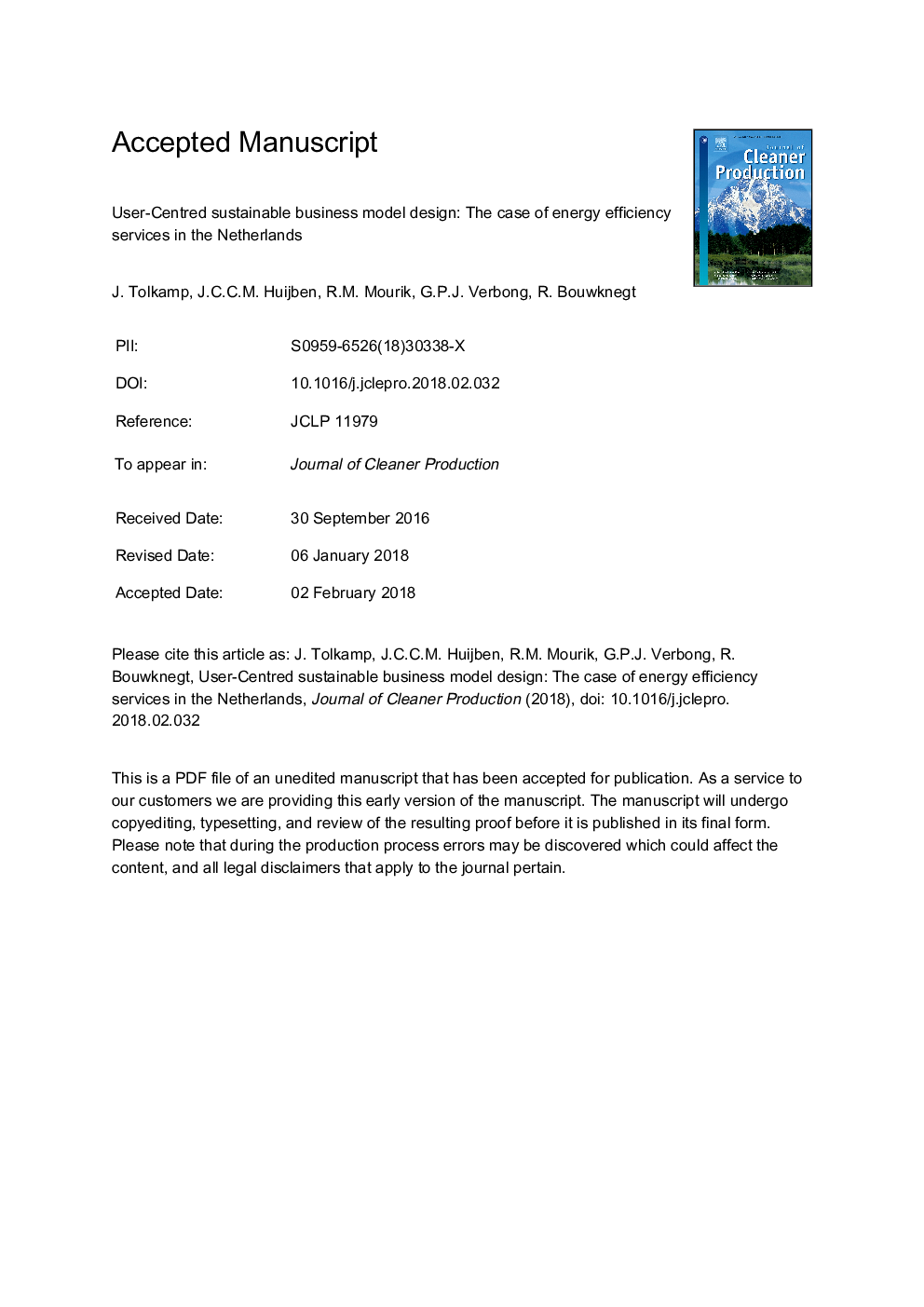| Article ID | Journal | Published Year | Pages | File Type |
|---|---|---|---|---|
| 8097441 | Journal of Cleaner Production | 2018 | 31 Pages |
Abstract
The capability to both anticipate user needs and incorporate them into a firm's value proposition is considered as an important stepping stone towards more effective and sustainable business models. However, many firms struggle to involve the user in their business model design process. Therefore we have investigated what user-centred approaches to more sustainable business model design exist in practice and how they impact the market uptake of energy efficiency measures. Nine semi-structured interviews with CEOs and managers of firms that provide energy efficiency products and services have been conducted. We found that firms interact with the user in three phases: during the design, the marketing and the use-phase. For these different phases we identified an involvement loop consisting of four stages: design of involvement, facilitation of involvement, extraction of lessons learned and finally business model adaptation. Additionally, different types of user involvement were found ranging from sending and receiving information to co-producing and co-innovating the business model. Involving the user requires facilitation of opportunities for interaction in multiple components of the business model and can lead to both incremental and radical business model innovation ex-post. However, further research is needed to test when and to what extent user-centred approaches lead to more successful market uptake.
Related Topics
Physical Sciences and Engineering
Energy
Renewable Energy, Sustainability and the Environment
Authors
J. Tolkamp, J.C.C.M. Huijben, R.M. Mourik, G.P.J. Verbong, R. Bouwknegt,
